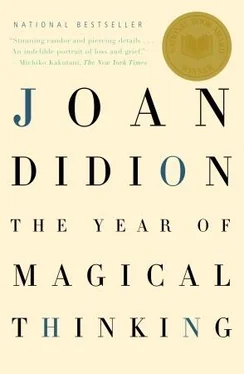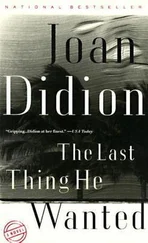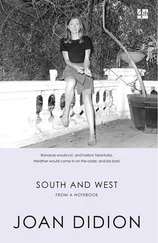So began the “gilded-boy story.”
So far clear enough, although potentially troubling details (three hundred years ago? play the part of an angel?) for someone emerging from coma.
It continued: “So that his appearance might be as magnificent as possible, he was covered from head to foot with a coating of gold foil. The little boy fell ill, and although everything possible was done for his recovery except the removal of the fatal golden covering, he died within a few hours.”
What was the “meaning” of the “gilded-boy story”? Did it have to do with the fallibility of “the popes”? With the fallibility of authority in general? With the specific fallibility (note that “everything possible was done for his recovery”) of medicine? What possible point could there be in telling this story to a patient immobilized in a neuro ICU at a major teaching hospital? What lesson could be drawn? Did they think that because it was a “story” it could be told without consequence? There was a morning on which the “gilded-boy story” seemed to represent, in its utter impenetrability and apparent disregard for the sensitivity of the patient, the entire situation with which I was faced. I went back to the UCLA Medical Center bookstore with the thought of checking other sources for an elucidation, but there was no mention of the gilded-boy story in the first several textbooks I picked up. In lieu of checking further, I bought, since the afternoon highs in Los Angeles were by then in the eighties and I had flown west with only the late-winter clothes I had been wearing in New York, several sets of blue cotton scrubs. So profound was the isolation in which I was then operating that it did not immediately occur to me that for the mother of a patient to show up at the hospital wearing blue cotton scrubs could only be viewed as a suspicious violation of boundaries.
Ihad first noticed what I came to know as “the vortex effect” in January, when I was watching the ice floes form on the East River from a window at Beth Israel North. At the join between the walls and the ceiling of the room from which I was watching the ice floes there happened to be a rose-patterned wallpaper border, a Dorothy Draper touch, left I supposed from the period when what was then Beth Israel North had been Doctors’ Hospital. I myself had never been in Doctors’ Hospital, but when I was in my twenties and working for Vogue it had figured in many conversations. It had been the hospital favored by Vogue editors for uncomplicated deliveries and for “resting,” a kind of medical Maine Chance.
This had seemed a good line of thinking.
This had seemed better than thinking about why I was at Beth Israel North.
I had ventured further:
Doctors’ Hospital was where X had the abortion that was bought and paid for by the district attorney’s office. “X” was a woman with whom I had worked at Vogue. Seductive clouds of cigarette smoke and Chanel No. 5 and imminent disaster had trailed her through the Condé Nast offices, which were then in the Graybar Building. On a single morning, while I was attempting to put together a particularly trying Vogue feature called “People Are Talking About,” she had found both that she needed an abortion and that her name had turned up in the files of a party girl operation under investigation by the district attorney’s office. She had been cheerful about these two pieces of (what had seemed to me) devastating news. A deal had been struck. She had agreed to testify that she had been approached by the operation, and the district attorney’s office had in turn arranged a D&C at Doctors’ Hospital, no inconsiderable favor at a time when getting an abortion meant making a clandestine and potentially lethal appointment with someone whose first instinct in a crisis would be to vacate the premises.
The party girl operation and the arranged abortion and the years in which I had spent mornings putting together “People Are Talking About” still seemed a good line of thinking.
I remembered having used such an incident in my second novel, Play It As It Lays. The protagonist, a former model named Maria, had recently had an abortion, which was troubling her.
Once a long time before Maria had worked a week in Ocho Rios with a girl who had just had an abortion. She could remember the girl telling her about it while they sat huddled next to a waterfall waiting for the photographer to decide the sun was high enough to shoot. It seemed that it was a hard time for abortions in New York, there had been arrests, no one wanted to do it. Finally the girl, her name was Ceci Delano, had asked a friend in the district attorney’s office if he knew of anyone. “Quid pro quo,” he had said, and, late the same day that Ceci Delano testified to a blue-ribbon jury that she had been approached by a party girl operation, she was admitted to Doctors’ Hospital for a legal D&C, arranged and paid for by the district attorney’s office.
It had seemed a funny story as she told it, both that morning at the waterfall and later at dinner, when she repeated it to the photographer and the agency man and the fashion coordinator for the client. Maria tried now to put what had happened in Encino into the same spirited perspective, but Ceci Delano’s situation seemed not to apply. In the end it was just a New York story.
This seemed to be working.
I had avoided thinking for at least two minutes about why I was at Beth Israel North.
I had moved on, into the period during which I was writing Play It As It Lays. The rented wreck of a house on Franklin Avenue in Hollywood. The votive candles on the sills of the big windows in the living room. The té de limón grass and aloe that grew by the kitchen door. The rats that ate the avocados. The sun porch on which I worked. Watching from the windows of the sun porch as Quintana ran through a sprinkler on the lawn.
I recall recognizing that I had hit more dangerous water but there had seemed no turning back.
I had been writing that book when Quintana was three.
When Quintana was three.
There it was, the vortex.
Quintana at three. The night she had put a seed pod from the garden up her nose and I had driven her to Children’s Hospital. The pediatrician who specialized in seed pods had arrived in his dinner jacket. The next night she had put another seed pod up her nose, wanting to repeat the interesting adventure. John and I walking with her around the lake in MacArthur Park. The old man lurching from a bench. “That child is the picture of Ginger Rogers,” the old man cried. I finished the novel, I was under contract to begin a column for Life, we took Quintana to Honolulu. Life ’s idea for the first column was that I should introduce myself, “let the readers know who you are.” I planned to write it from Honolulu, the Royal Hawaiian Hotel, we used to get a lanai suite on the press rate for twenty-seven dollars a night. While we were there the news of My Lai broke. I thought about the first column. It seemed to me that given this news I should write it from Saigon. By then it was a Sunday. Life had given me a printed card with the home numbers of its editors and also of lawyers in cities around the world. I took out the card and called my editor, Loudon Wainwright, to say I was going to Saigon. His wife answered the phone. She said he would have to call me back.
“He’s watching the NFL game,” John said when I hung up. “He’ll call you at halftime.”
He did. He said that I should stay where I was and introduce myself, that as far as Saigon went “some of the guys are going out.” The topic did not seem open to further discussion. “There’s a world in revolution out there and we can put you in it,” George Hunt had said when he was still the managing editor of Life and offering me the job. By the time I finished Play It As It Lays George Hunt had retired and some of the guys were going out.
Читать дальше
Конец ознакомительного отрывка
Купить книгу












